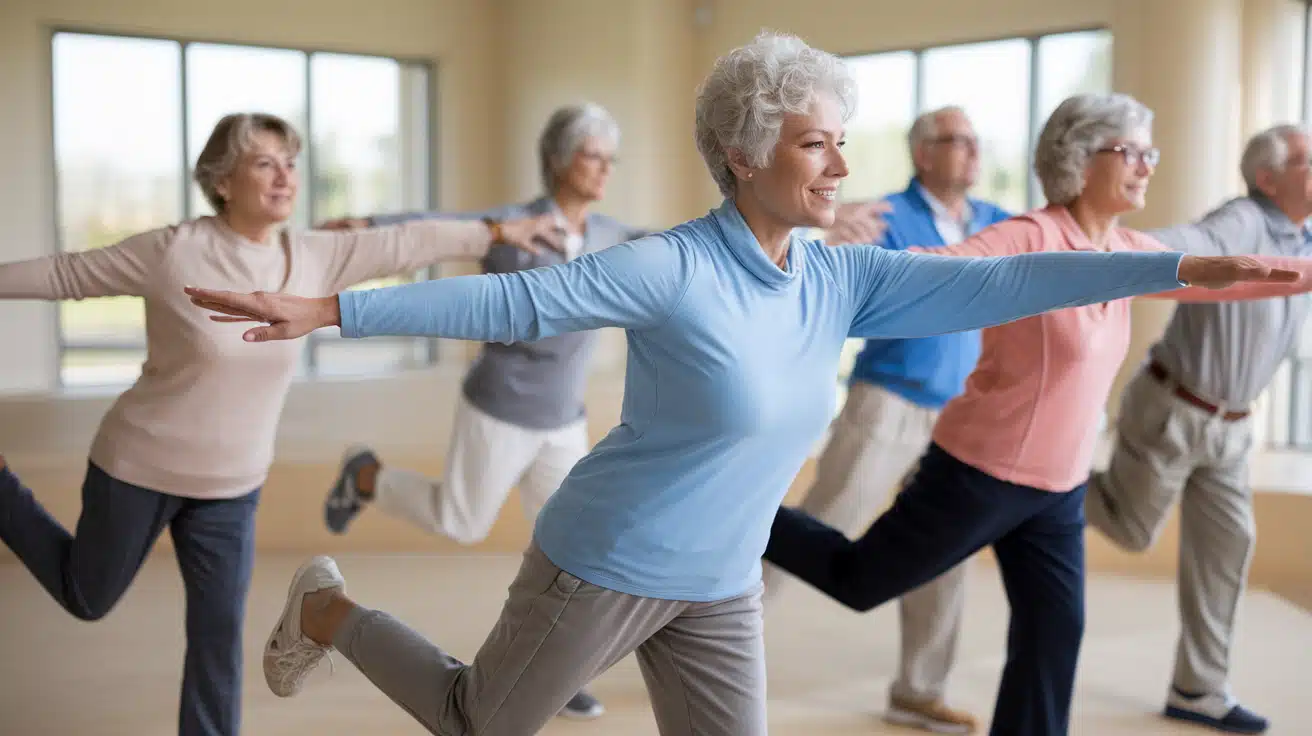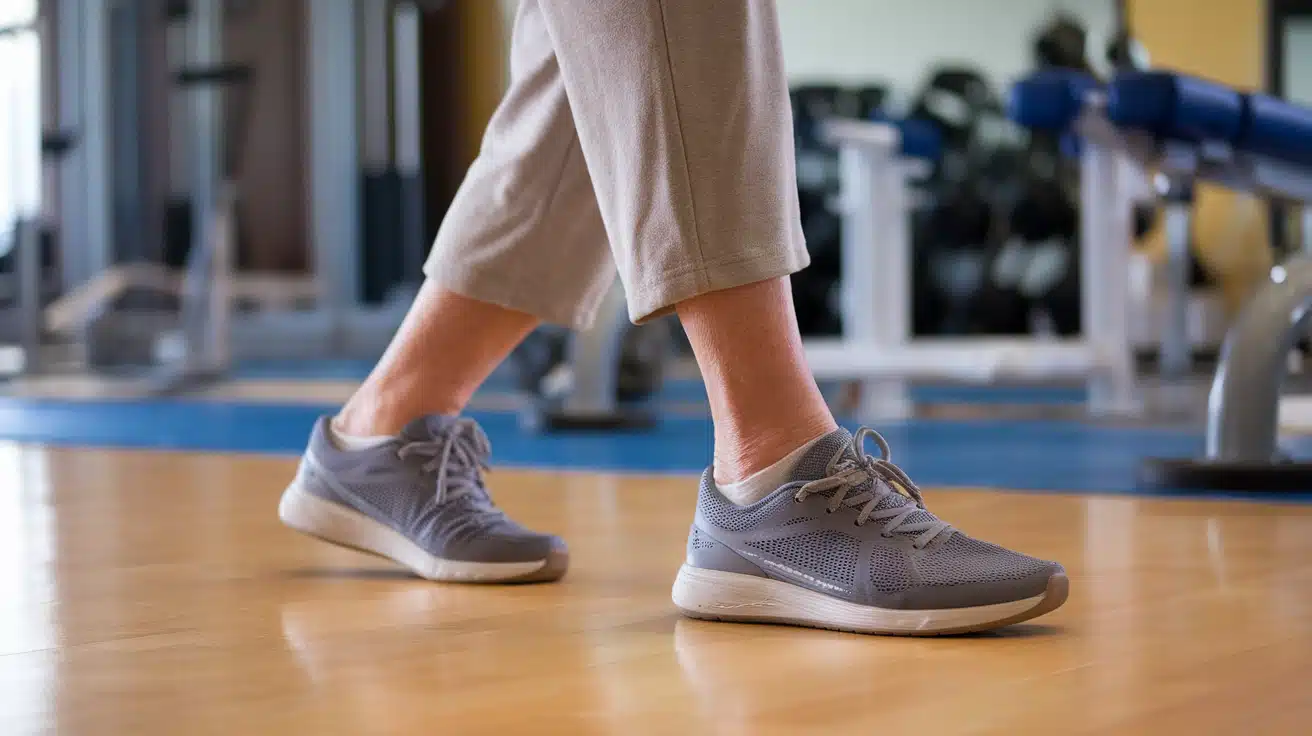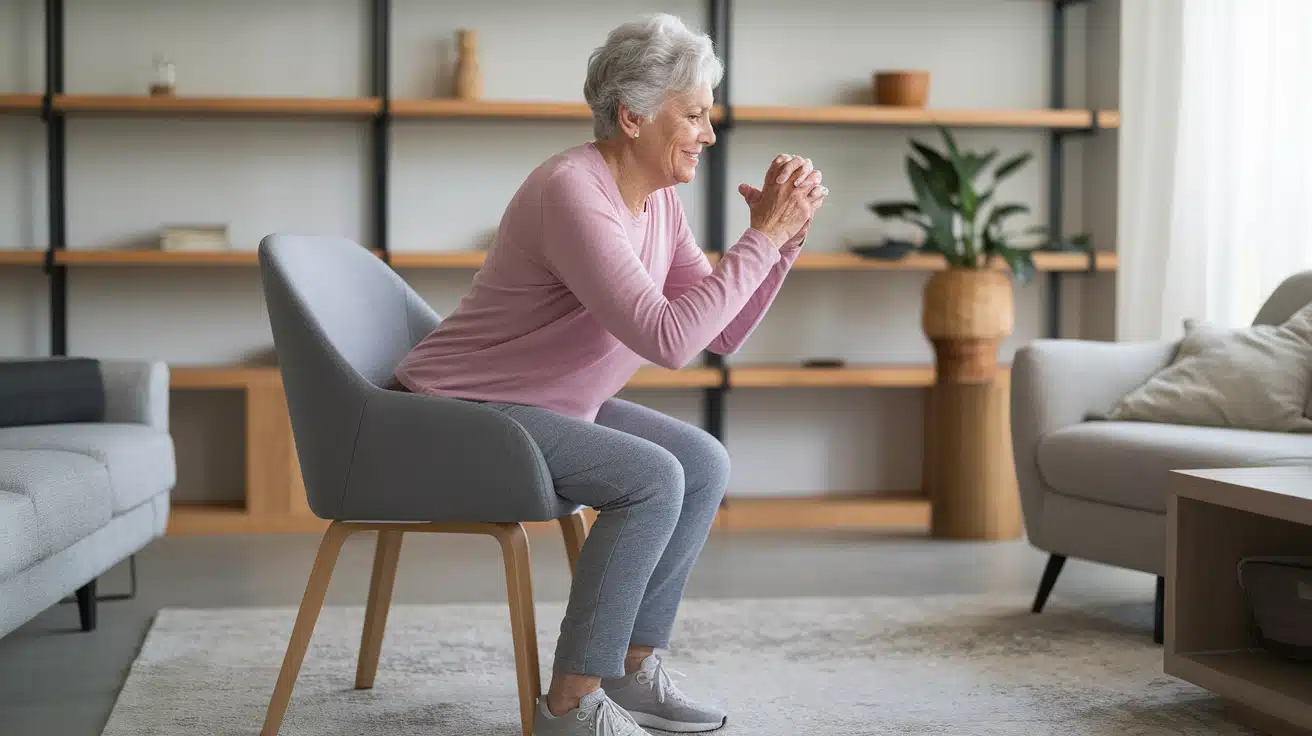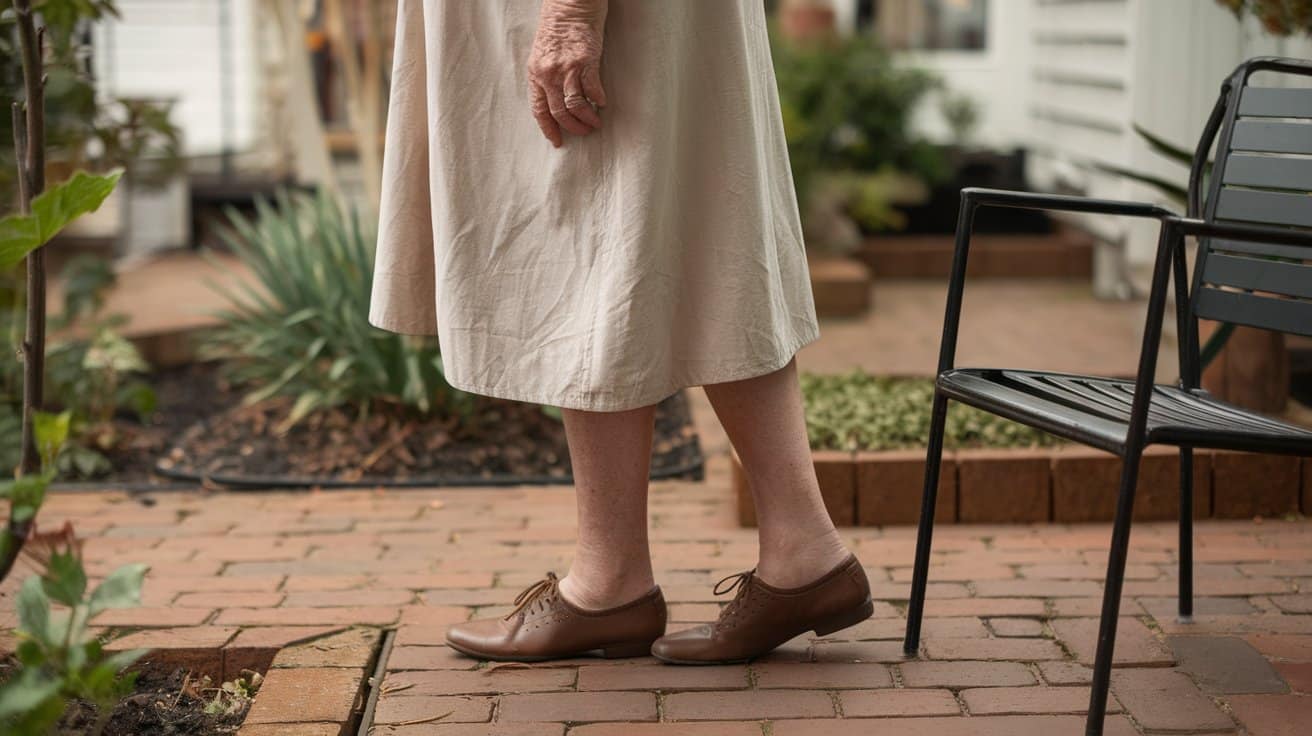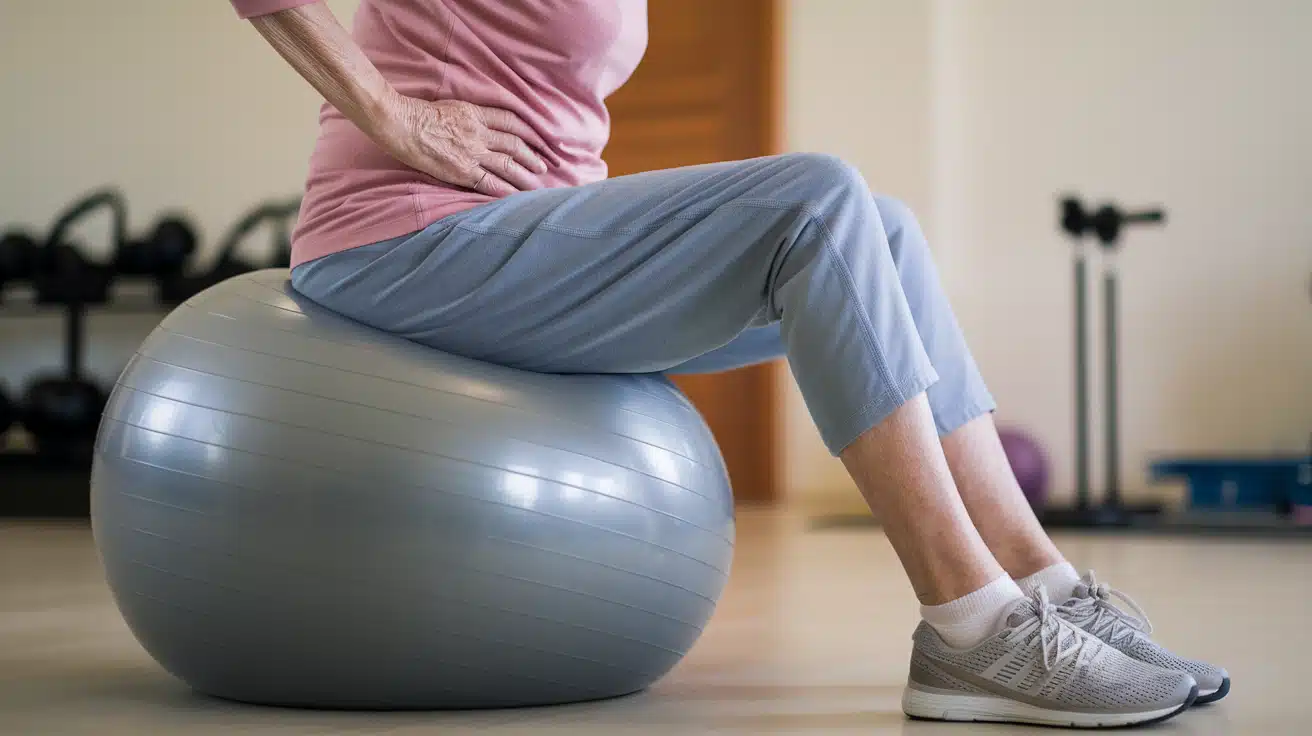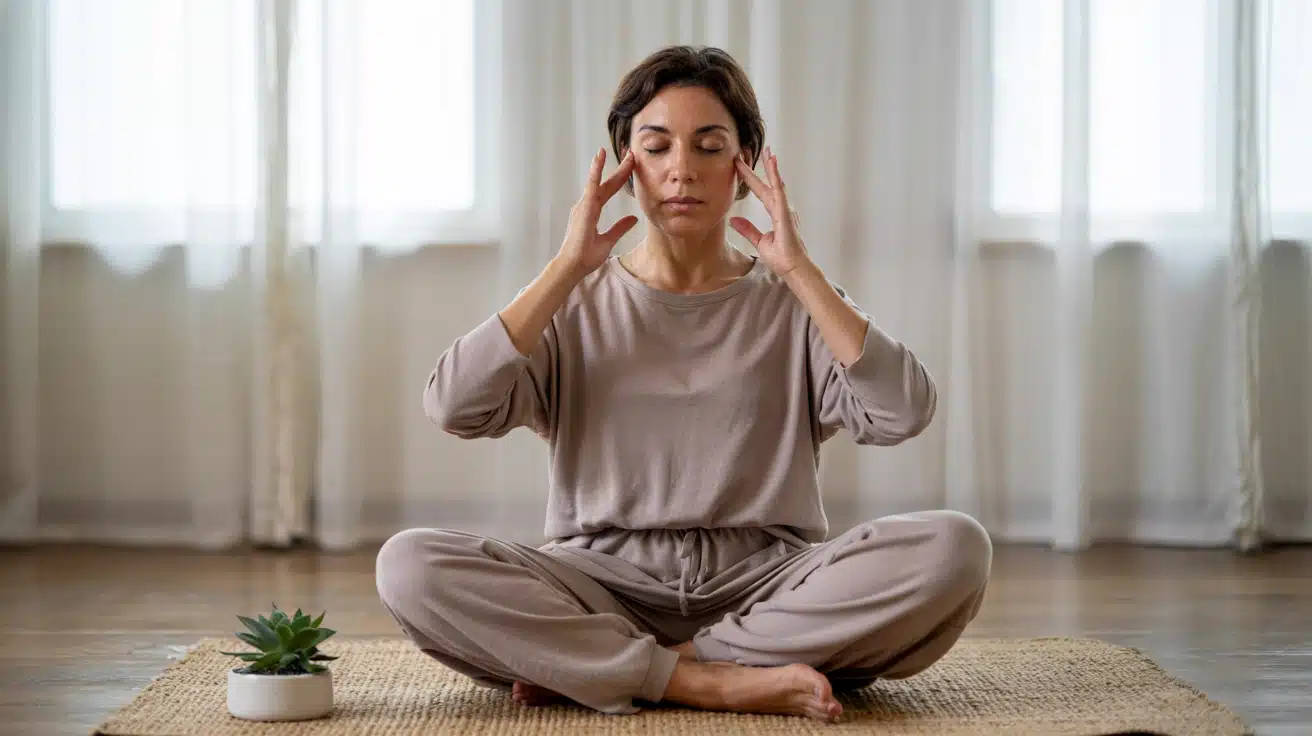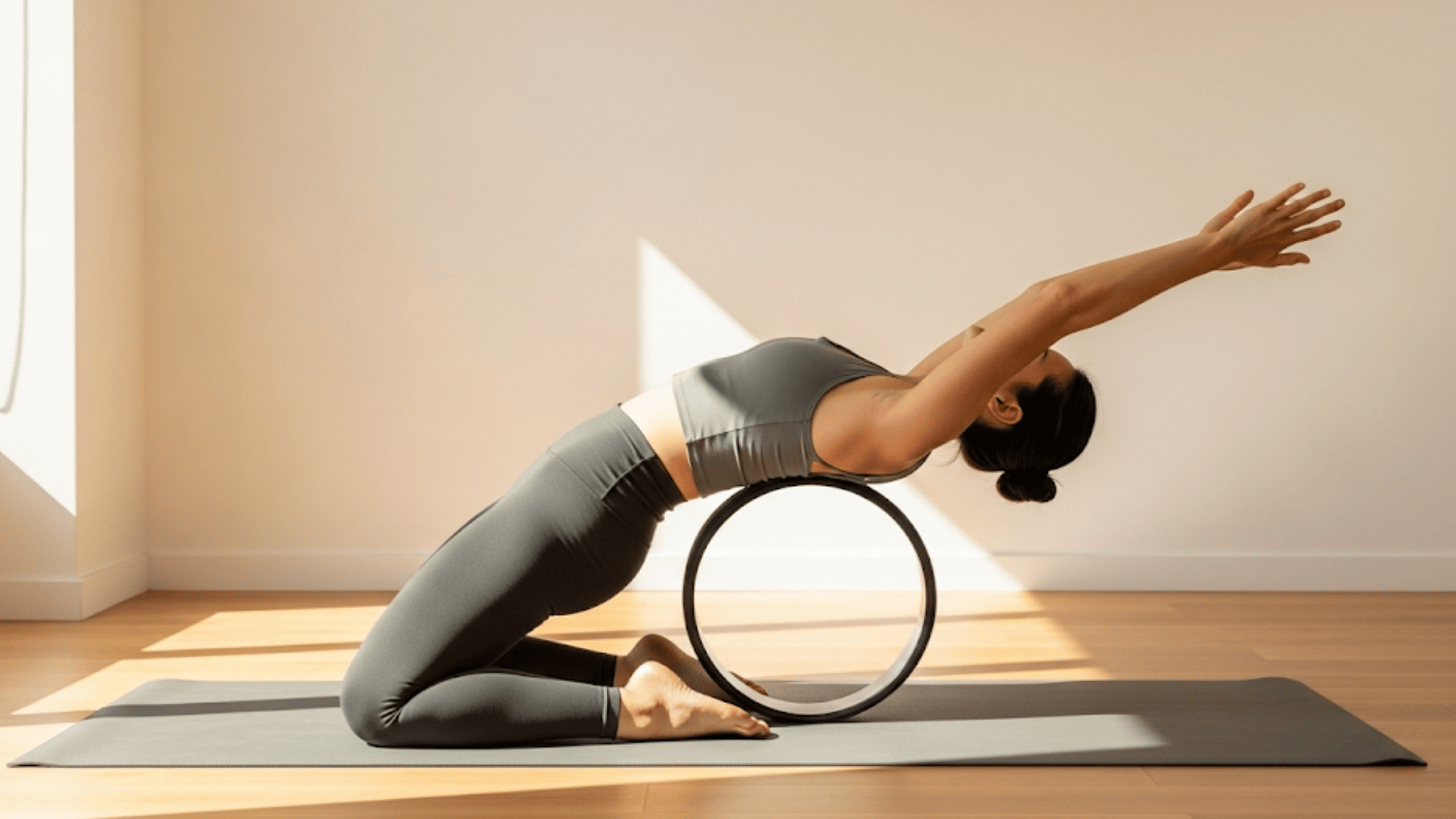Falls among seniors happen far too often, with one in four adults over 65 experiencing a fall each year. As we age, muscle loss, slower reflexes, and joint stiffness make staying steady increasingly difficult.
These physical changes can turn simple daily tasks, such as walking to the mailbox or standing from a chair, into potential safety risks.
The instability often causes seniors to limit their activities, which can lead to even weaker muscles and reduced confidence.
Balance exercises can reduce your risk of falling by up to 23% while maintaining your activity and independence.
Regular balance training strengthens stabilizing muscles, improves reaction time, and boosts confidence in daily movements.
This guide will show you why balance is essential for healthy aging, the key benefits of balance training, and simple exercises you can start today, right in your own home, with just a chair for support.
What Causes Balance Problems in Seniors?
Several bodily changes occur naturally as we age, making it harder to stay steady on our feet. Understanding these causes helps explain why balance becomes more challenging with age.
1. Muscle weakness is the biggest factor. After age 30, we lose 3-8% of our muscle mass each decade. The small muscles in our legs and core that keep us upright become weaker, making it harder to catch ourselves when we start to tip.
2. Slower reflexes also play a major role. Our nervous system doesn’t send signals as quickly as it used to. When we start to lose our balance, our body takes longer to react and make the quick adjustments needed to stay upright.
3. Vision changes make balance more difficult, too. Our eyes help us stay oriented and spot obstacles. As eyesight gets worse with age, we lose important visual cues that help us maintain stability while walking or standing.
4. Joint stiffness limits our ability to make quick balance corrections. When ankles, knees, and hips become less flexible, we can’t adjust our position as easily, and we start to wobble.
5. Side effects often contribute to balance issues. Many common medications for blood pressure, depression, or sleep can cause dizziness, drowsiness, or lightheadedness that increases fall risk.
These changes work together to make everyday activities more challenging and potentially dangerous for older adults.
Benefits of Balance Exercises for Seniors
- Reduces Fall Risk: Regular balance training can cut fall risk by up to 23%, preventing broken bones and hospital stays that often lead to loss of independence.
- Improves Reaction Time and Coordination: Balance exercises help seniors respond more quickly when they start to stumble, providing them with the quick reflexes needed to regain their balance.
- Supports Daily Mobility: Strong balance makes everyday activities, such as climbing stairs, reaching for items, and walking on uneven surfaces, much safer and easier.
- Boosts Confidence and Mental Well-being: When seniors feel steady on their feet, they worry less about falling and feel more confident in staying active and social.
- Encourages Social Activity: Many balance programs happen in groups at senior centers or fitness classes, creating opportunities to meet friends and stay connected with the community.
Easy Balance and Stability Exercises for Seniors at Home
Stay safe and independent with these simple at-home exercises, designed to improve balance, prevent falls, and boost confidence in older adults.
1. Single-Leg Stand
Stand next to a wall or sturdy chair for safety support. Lift one foot off the ground and hold for 10-15 seconds. Keep your standing leg slightly bent, not locked straight.
Start with just a few seconds and build up time as you get stronger. This simple exercise works all the small muscles that keep you upright.
2. Heel-to-Toe Walk
Walk in a straight line, placing your heel directly in front of your other foot’s toes. Imagine you’re walking on a tightrope or a straight line on the floor. Keep your arms out to your sides for balance if needed.
Take 10-20 steps forward, then turn around and walk back. This mimics the balance challenges you face when walking on narrow paths.
3. Chair Squats
Sit in a sturdy chair with your feet flat on the floor, shoulder-width apart. Stand up slowly without using your hands, then sit back down with control. Keep your back straight and lean slightly forward as you rise.
Repeat 10-15 times to build leg and core strength. This exercise helps with getting up from toilets, beds, and low chairs safely.
4. Side Leg Raises
Stand behind a chair and hold the back for support. Lift one leg straight out to the side, keeping your body upright. Hold for 2-3 seconds, then lower slowly and repeat 10-15 times.
Switch to the other leg and repeat the same number. This strengthens the muscles that prevent sideways falls and improve hip stability.
5. Tandem Stand
Place one foot directly in front of the other, heel touching toes. Hold this position for 10-30 seconds without moving. Keep a chair or wall nearby for safety support if needed.
This narrow stance challenges your balance system more than regular standing. Try closing your eyes for an extra challenge once you master the basic position.
6. Marching in Place
Hold the back of a sturdy chair with both hands. Lift one knee up high, then lower it and lift the other knee. March at a comfortable pace for 30-60 seconds.
Focus on lifting your knees as high as comfortably as you can while staying steady. This exercise improves coordination between your legs and helps with stair climbing.
7. Toe Lifts
Stand with feet hip-width apart, holding a chair if needed. Rise up on your toes, lifting your heels off the ground. Hold for 2-3 seconds, then lower down slowly. Repeat 10-15 times, focusing on control rather than speed.
This strengthens your calves and improves the balance needed for walking and climbing stairs.
8. Seated Balance Ball Exercise
Sit on a large exercise ball with someone nearby for safety. Keep your feet flat on the floor and hands on your hips. Gently shift your weight forward, backward, and side to side.
Start with small movements and hold each position for a few seconds. This activates your core muscles and improves your body’s automatic balance responses.
How Often Should Seniors Perform Balance Exercises?
Seniors should perform balance exercises at least twice to three times per week for optimal results in fall prevention and improved stability. Start with just 10-15 minutes per session, focusing on 2-3 exercises that feel comfortable and safe.
As the strength and confidence build over several weeks, gradually increase the duration to 20-30 minutes and add more challenging movements.
For maximum benefit, combine balance training with flexibility stretches and light strength exercises. This approach helps maintain muscle mass, joint mobility, and coordination simultaneously.
Consistency matters more than intensity, so it’s better to do shorter sessions regularly than long workouts occasionally.
Many seniors find success by setting aside specific days, such as Mondays, Wednesdays, and Fridays, for their balance routine, making it a habit that sticks long-term.
Wrapping It Up
Balance exercises are one of the smartest investments you can make in your health and independence as you age. Just 2-3 sessions per week can dramatically cut your fall risk while keeping you confident and active in your daily life.
The simple exercises we covered require no special equipment – just a sturdy chair and a few minutes of your time.
Remember, every small step counts. Start with just one or two exercises that feel comfortable, then gradually add more as your strength builds.
The benefits go far beyond fall prevention – you’ll notice improved confidence, better mobility, and the peace of mind that comes with feeling steady on your feet.
Don’t wait for a fall to take action. Your future self will thank you for taking the first step today. Begin with the single-leg stand or chair squats this week, and take the first step toward a safer, more confident tomorrow.
Balance training isn’t just about preventing falls – it’s about maintaining the independence and quality of life you deserve.

